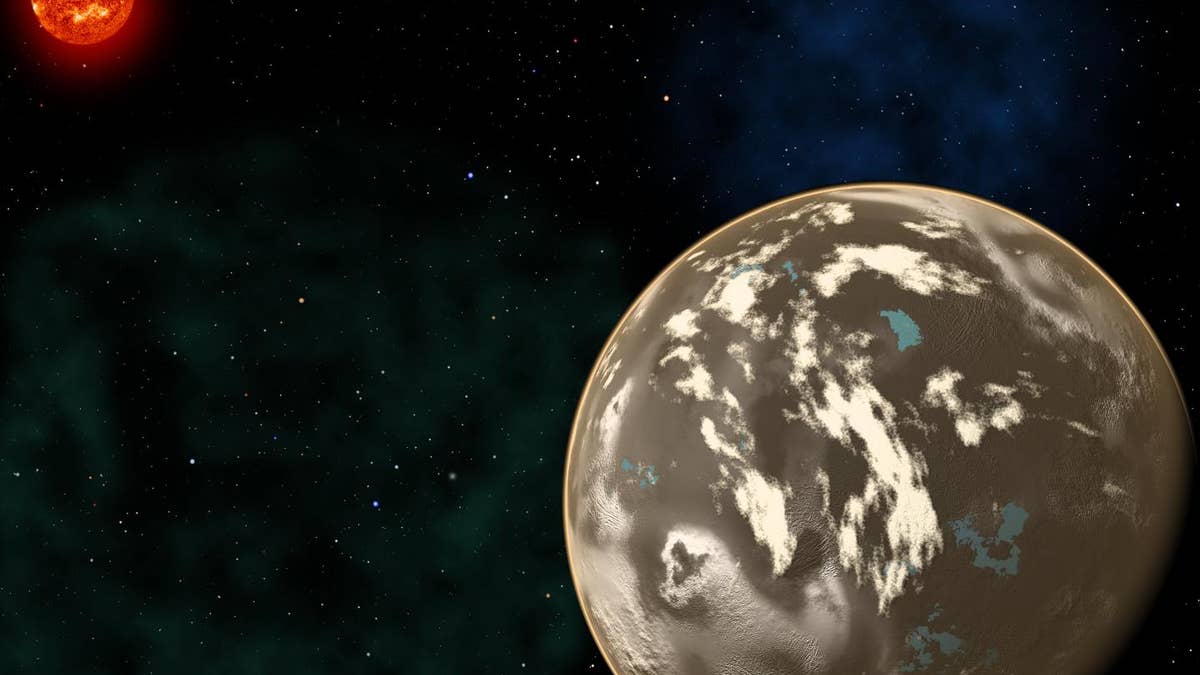
An artist's conception of a carbon planet orbiting a sun-like star in the early universe. (Christine Pulliam (CfA). Sun image: NASA/SDO)
Planets made of diamonds and graphite, and early life forming on these strange worlds— it sounds like science fiction, but researchers are saying it could be possible.
Astronomers from the Harvard-Smithsonian Center for Astrophysics have called attention to a specific type of star, arguing that carbon-based planets around these stars, if they formed, could have been good places for life to spark when the universe was young.
The stars are called carbon-enhanced metal-poor stars, or CEMP stars, and the researchers argue that planets made of materials like graphite and even diamond could have formed near these rare suns.
Related: Did our sun steal 'Planet 9' from another star?
"These stars are fossils from the young universe," Avi Loeb, the chair of the astronomy department at Harvard University, said in a statement. "By studying them, we can look at how planets, and possibly life in the universe, got started."
The lead author on the new research— which will be published in the journal Monthly Notices of the Royal Astronomical Society— is Natalie Mashian, a graduate student at Harvard University.
"We have good reason to believe that alien life will be carbon-based, like life on Earth, so this also bodes well for the possibility of life in the early universe," Mashian said in the statement.
Related: NASA identifies 1,284 new exoplanets, most ever announced at once
The astronomers call for a search for planets around these CEMP stars, and suggest using what’s known as the “transit method” to do so. Most famously, NASA’s Kepler spacecraft uses that technique, training its eye on distant stars and watching for a dip in the star’s light as a possible planet passes between the star and Kepler.
Planets that are outside of our solar system are called exoplanets, and recently, NASA announced that it had officially added 1,284 such distant worlds to the roster of confirmed exoplanets, all of them found by Kepler and confirmed using a new statistical method.
"As long as a habitable planet is warmed by its host star, life will likely persist on it," Loeb said in an email to FoxNews.com, as to whether or not life could still exist on any of these carbon planets, if it ever began there in the first place. "These old stars have a lifetime that is comparable to the age of the Universe, and we see them shining today even though they formed early on in cosmic history. Stars with a higher mass are shorter lived and life around them was likely extinguished after their death. We do not see those old massive stars around."
Related: Astronaut headed to space station describes what she'll miss most on Earth
"Fortunately, our Sun is at the middle of its life right now so we have billions of years to contemplate how to travel to another star and keep ourselves warm," Loeb continued. "I am currently involved in the Breakthrough Starshot project, which is the first step in developing the technology that might enable such a journey."
Follow Rob Verger on Twitter: @robverger
